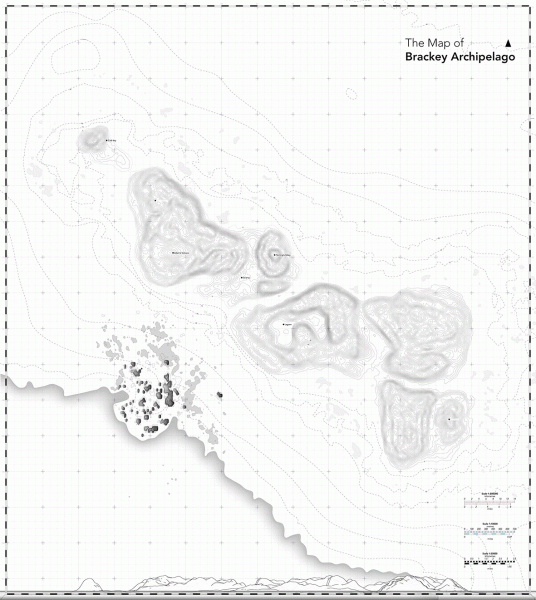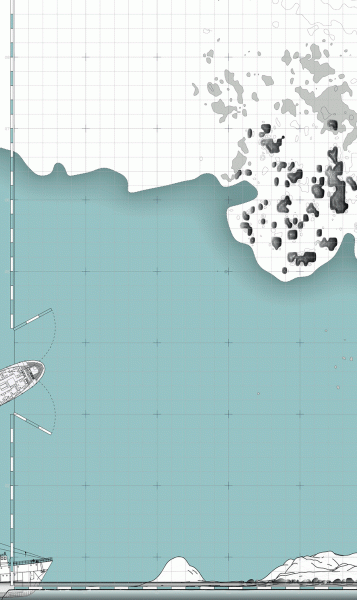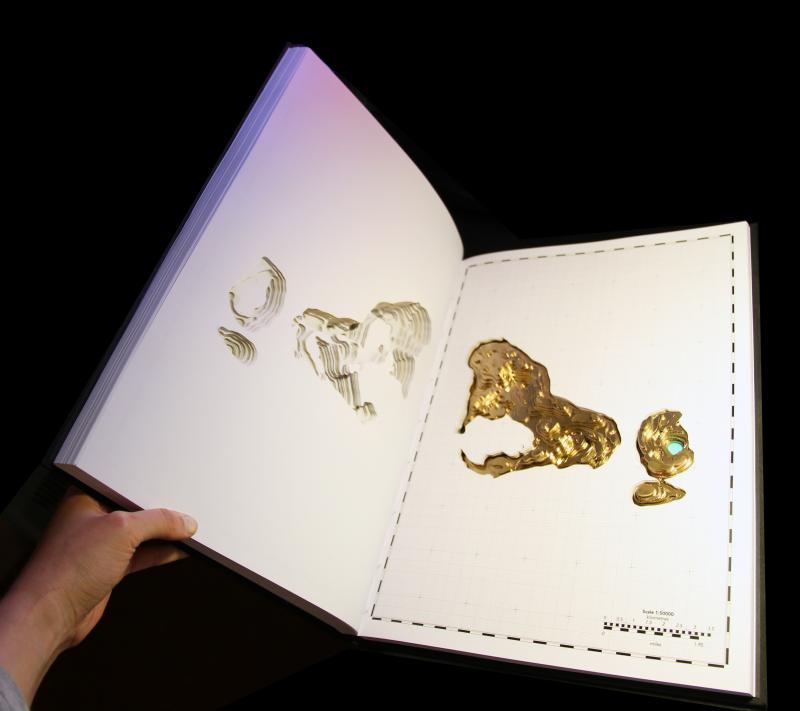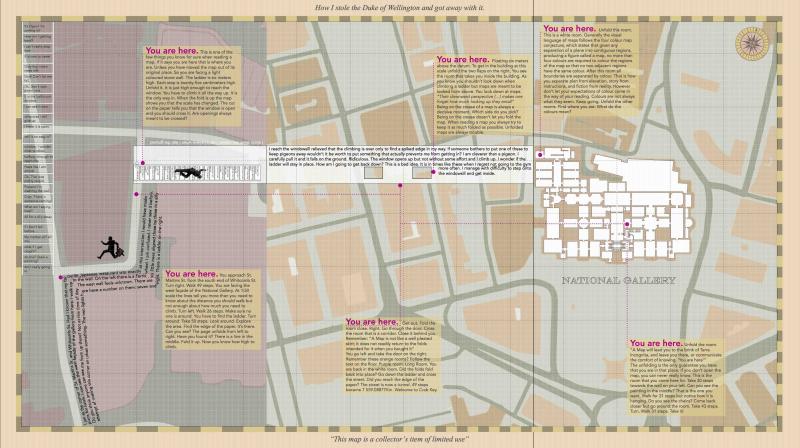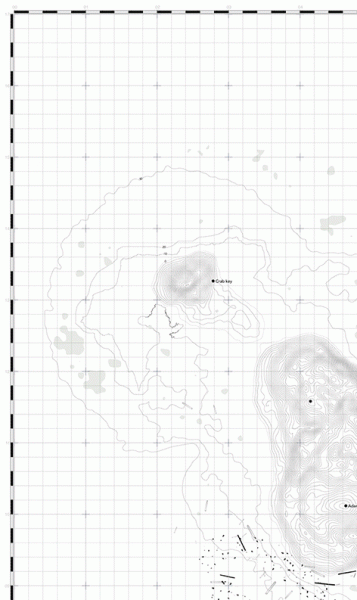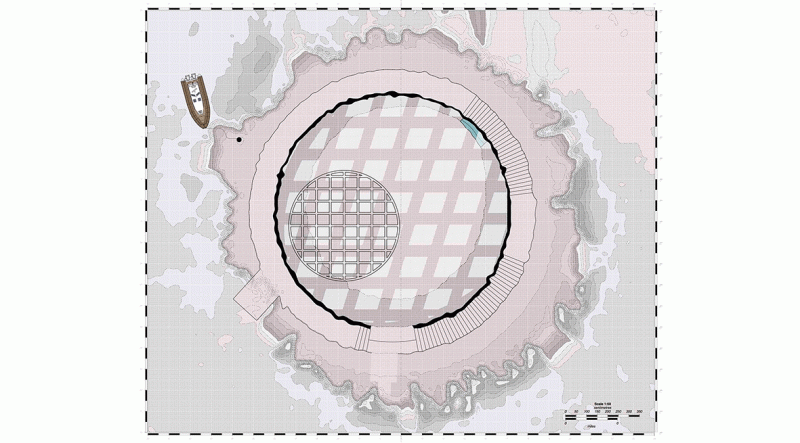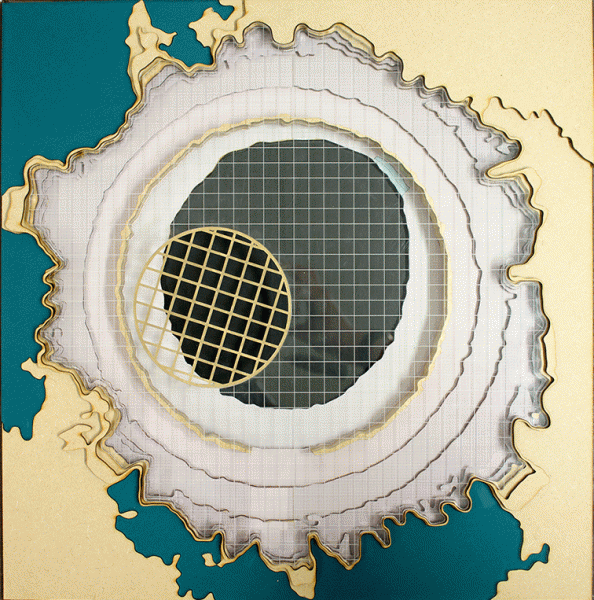The Map of Crab Key
This is an imagined island designed by Ken Adam to be the lair of the first ever James Bond Villain, Dr No.
The film medium allows for a continuous narrative and an illusion of a parallel continuous geography. The film cut permits this illusion of continuity.
The map is set up to re-create this illusion and subvert it simultaneously. The fold acts as the film cut. Each time the map is unfolded, it opens into another world, and another narrative, and another scale of the movie.
The map fold is always operative and this one tells us on which ontological level of the island creation we are.
We start by being located within a world we know only to then unfold and zoom into Pinewood Studios in the outskirts of London, where parts of the James bond world where built and filmed, then zoom further to go to Jamaica where the external shots where done and ultimately we enter my own view of this place: the Bond world Ken Adam invented where the villain hid the Duke of Wellington that was stole from the National Gallery.

